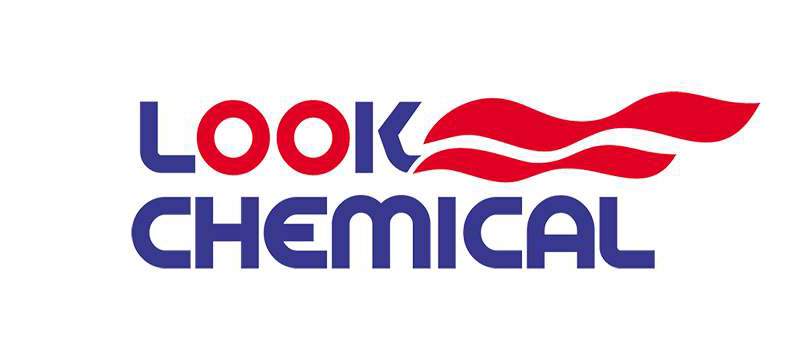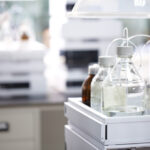ShanDong Look Chemical Co.,Ltd

Guanidinoacetic acid CAS 352-97-6 | Look Chemical
CAS No. 352-97-6
EINECS: 206-529-5
Chemical Name: Guanidinoacetic acid
Category: Food additives
Molecular Formula: C3H7N3O2
Molecular Weight: 117.11
Purity: 99%min
Brand Name: Look Chemical
Place of Origin: China
Name: Guanidinoacetic acid
CAS: 352-97-6
Purity: 99%min
MOQ: 1KG
The Complete Guide of Guanidinoacetic acid
Guanidinoacetic acid Chemical Formula

Basic Info
| CAS No: | 352-97-6 |
| MF: | C3H7N3O2 |
| Molecular Weight: | 117.11 |
| EINECS: | 206-529-5 |
| Appearance: | White to Off-White powder |
| Product Name: | Guanidinoacetic acid |
| Other Name: | Guanidineacetic acid; Glycocyamine |
| Place of Origin: | China |
| Brand: | Look Chemical |
What is Guanidinoacetic acid?
Guanidinoacetic acid is the only prerequisite for creatine synthesis in vertebrates. Creatine is a temporary storage place for energy in the body. It and creatine phosphate form a phosphogen system. When the body’s ATP supply is insufficient, it can provide P and re-synthesize ATP with ADP. In general, about 1.7% of the creatine-phosphocreatine system in humans and animals is inevitably converted into creatinine and secreted into the urine, so the body must continuously replenish creatine.
Animals can synthesize creatine endogenously, and the synthesis requires a 2-step reaction: arginine and glycine are catalyzed by L-arginine: glycine amidinase in the kidney to synthesize guanidinoacetic acid, and guanidinoacetic acid reaches the liver through blood circulation Under the action of N-dimethyltransferase, it reacts with S-adenosylmethionine to generate creatine. The endogenous synthetic creatine of animals accounts for 66%~75% of the creatine required by the body, which cannot meet the demand. Therefore, it is necessary to add animal protein (fish meal or meat meal) to the diet to supplement it. In my country, fishmeal and other high-quality animal protein raw materials are in short supply and the price remains high. However, the plant-based raw materials do not contain creatine, and pure plant diets are likely to cause the lack of creatine in animals. Therefore, the development of the feed industry is facing severe challenges. The addition of guanidinoacetic acid in feed can compensate for the decline in animal performance caused by pure plant diets to a certain extent. The research and application of guanidinoacetic acid has attracted the attention of the majority of animal husbandry technology practitioners.
In recent years, as an experimental dietary additive, the value of guanidinoacetic acid in human nutrition has been re-emphasized, and researchers have begun to study its role in animal production. Clinical results show that guanidinoacetic acid is effective in preventing muscle loss in patients with chronic renal failure. For healthy volunteers, guanidinoacetic acid can effectively improve their muscle development ability; for patients with chronic fatigue syndrome, guanidinoacetic acid can also improve some related symptoms. Guanidinoacetic acid increases creatine synthesis and stimulates cellular energy metabolism. Studies have shown that creatine content in skeletal muscle was significantly increased (P<0.05) after injection of guanidinoacetic acid in humans and piglets.
Physiological functions of guanidinoacetic acid
Researches have shown that exogenous enhancement of guanidinoacetic acid can promote insulin secretion in rats. Compared with the synthesis of creatine as well as conserving arginine, guanidinoacetic acid is more powerful in enhancing insulin secretion. The polarity of the guanidinoacetic acid molecule affects the depolarization of islet cell membranes in the pancreas, promoting insulin secretion via a protein kinase An and C-sensitive device. Furthermore, exogenous guanidinoacetic acid increases insulin secretion by lowering blood sugar levels. It might be that potentiation of guanidinoacetate protein kinase regulates the activity of insulin receptors on target cells. Therefore, guanidinoacetic acid can promote the secretion of insulin and also influence insulin metabolic rate; it can additionally be used as an antidiabetic substance to improve the symptoms of hyperglycemia. There are no scientific research studies in humans evaluating the feature of guanidinoacetic acid to promote insulin secretion as well as its system of action.
In animal nourishment, adding guanidinoacetic acid to the diet regimen can properly save arginine. This sparing impact allows more arginine to be utilized for various other functions, consisting of healthy protein synthesis, cell signaling as well as hormone secretion. Current research studies have shown that adding guanidinoacetic acid to the diet plan can boost the growth efficiency as well as day-to-day gain of broilers, as well as more arginine is involved in protein synthesis, consisting of white meat synthesis. Presently, no researches have examined its arginine-sparing and protein-synthesizing functions in people.
γ-aminobutyric acid is the primary inhibitory neurotransmitter in the nerves, as well as guanidinoacetic acid can act as a neuromodulator, affecting nerve excitation, muscle tone as well as mind development. The communication of guanidinoacetic acid as well as GABA receptors can be seen as an alternative device that can be clarified as an autosomal recessive disorder in which creatine synthesis is impaired because of guanidinoacetate transferase shortage. The disease can create neurological deficits in clients. Guanidinoacetic acid as well as γ-aminobutyric acid are similar in framework, as well as guanidinoacetic acid can turn on voltage-gated and ligand-gated chloride ion channels in nerve cells, affecting spontaneous nerve task. The above circumstance may happen in the lack of GAMT enzyme, as well as the accumulation of huge quantities of guanidinoacetic acid in the blood and also mind. Nevertheless, it is unclear whether guanidinoacetic acid can function as a GABA receptor activator under physiological problems. Experimental studies have actually revealed that giving healthy and balanced individuals 3 g of guanidinoacetic acid daily can decrease the level of GABA in the blood after 3 weeks. The regulation mechanism of GABA in diet plan to GABA requires to be further studied.
Guanidinoacetic acid can function as a substratum for creatine kinase (CK) and supplement creatine phosphate. Guanidinoacetic acid can be viewed as a phosphocreatine analog and device of energy, at the very least when creatine is deficient. Under regular conditions, creatine synthesis is typical, and also the opportunity of guanidinoacetic acid acting as a substratum for creatine kinase is minimal. The capacity of guanidinoacetic acid to serve as a substrate for creatine kinase and also as an alternate phosphatase in the lack of creatine is solid. This perspective has actually additionally been validated.
Existing study reveals that guanidinoacetic acid impacts the cellular oxidative-antioxidant system. Guanidinoacetic acid can be seen as an antioxidant in addition to a pro-oxidant. Excess buildup under pathological conditions or intrastriatal shot of guanidinoacetic acid can cause oxidative stress. Nonetheless, dietary guanidinoacetic acid can boost cellular antioxidant degrees by triggering the task of some antioxidant enzymes as well as raising complete antioxidant capacity, which is different from the outcomes of shot or too much buildup of different degrees of guanidinoacetic acid reported in the past. After intrastriatal shot of guanidinoacetic acid, when the brain guanidinoacetic acid content is as high as 100 μmol/ L, guanidinoacetic acid plays a pro-oxidative impact; ), will certainly be found to play an antioxidant role. From a chemical perspective, guanidinoacetic acid will create reactive oxygen types because its conjugate base can give away an electron to produce a powerful free radical – peroxide. As a result, pure guanidinoacetic acid serves as a pro-oxidant. However, guanidinoacetic acid serves as an antioxidant, as its related metabolites (creatine and arginine) can feed on totally free radicals after shot.
Guanidinoacetic acid reduces vascular resistance and also boosts blood flow. Guanidinoacetic acid can be viewed as an effective blood pressure decreasing substance. The factor might be that guanidinoacetic acid hinders the methylation of norepinephrine, impacting its half-life and supportive impacts. However creatine has no special impact on high blood pressure. Guanidinoacetic acid might affect vasodilation through different systems. One more possibility is that guanidinoacetic acid achieves the vasodilation result by saving arginine and enhancing the quantity of endothelium-derived leisure element NO related to arginine metabolism. However, in the professional practice of human medicine, there is no research report on the antihypertensive result and mechanism of guanidinoacetic acid.
References
- Glycocyamine – WikiPedia
- Zhang Junling, Zhang Defu, Shi Fengyun, et al. Research progress of guanidinoacetic acid in animal production[J]. Chinese Journal of Animal Husbandry, 2016, 52(4): 63-66.
Guanidinoacetic acid for Sale
Feeding efficacy of GAA in diets of monogastric animals such as pigs and chickens
Murakami et al. added 0.06% to 0.24% GAA to the diet of meat breeding quail, and found that GAA in quail eggs increased linearly, and it could increase the GAA content of quail muscle after hatching, and then showed that adding GAA can improve reproductive performance and quail. Creatine content in muscle of offspring. He et al found that adding 0.06% to 0.12% GAA in 4 different doses of 1-42 day-old broiler chicken diets can improve broiler daily gain and feed efficiency (G:F), and can linearly increase plasma and kidney levels. Creatine content, while GAA and creatine content in the liver decreased. In addition, Zhang et al. added 0%, 0.06% and 0.12% GAA to 28-day-old broilers under summer heat stress conditions, and fed them continuously for 14 days. Increased expression of creatine transporter mRNA and increased creatine and phosphocreatine levels in broiler muscle improved energy expenditure due to transport. The above studies have shown that adding 0.06% to 0.12% GAA to the diets of quail and broilers of different ages under normal or heat stress conditions can increase the content of creatine and phosphocreatine in the body, and then improve the level of energy metabolism.
The growth-promoting effect of adding GAA in the diet on pigs, chickens and other monogastric animals is directly related to GAA’s participation in protein synthesis and metabolism in body tissues. Supplementing GAA in the diet can reduce the decomposition of arginine and glycine in the body, promote these amino acids to participate in the protein synthesis of the body more effectively, and then show growth-promoting effects. Secondly, it may also be related to the physiological regulation function of GAA itself, such as GAA can stimulate the secretion of insulin-like growth factor IGF-1, thereby improving growth performance. In addition, adding GAA to the diet can also promote the secretion of γ-aminobutyric acid, thereby promoting the secretion of growth hormone releasing hormone in the hypothalamus, and further promoting the secretion of growth hormone in the pituitary gland, and promoting the growth of animals.
- Effect of GAA on growth performance of pigs
As a new feed additive, GAA appears frequently in the research reports of suckling piglets, nursery pigs, growing pigs and finishing pigs. Mendonça et al. found that adding 0.1% GAA to the diet of pregnant sows had no significant effect on the growth performance of sows and piglets. Jayaraman et al. showed that 0.12% GAA can increase the daily gain and G:F of weaned piglets, and adding 0.12% GAA to the diet 60 days before slaughter can increase the slaughter weight of fattening pigs. Li Jielei et al. found that adding 0.06% GAA to the diet had no significant effect on the feed intake of nursery pigs, but it could increase their average daily gain and G:F. He et al. added 0%, 0.015%, 0.03%, 0.06%, and 0.12% GAA to the diets of 180 fattening pigs with an initial weight of 53 kg, respectively, which could linearly increase G:F, and the feed conversion efficiency of the 0.03% GAA dosage group reached Max (0.35). Zhao Yuan et al. added 4 different doses of GAA from 0% to 0.15% to the diet of fattening pigs with an initial weight of 70 kg, and found that the body weight, daily gain and G:F of fattening pigs increased significantly. Li et al. found that adding 0.1% GAA and 0.8% creatine monohydrate to the diet can increase the average daily gain of fattening pigs, and the effect of GAA is more obvious. GAA can also increase the feed intake of fattening pigs. The above research results showed that the addition of GAA in the diet had little effect on pig feed intake, but it had a significant effect on daily gain and G:F; When GAA is added at 0.05%~0.15%, the effects of weaning, nursing and growing and finishing pigs are more obvious. These results suggest that adding an appropriate dose of GAA can significantly promote growth and improve G:F. - Effect of GAA on poultry growth performance
Poultry grows fast, has a short growth cycle, and requires higher energy in the diet. In recent years, there have been many research reports on the effect of GAA on broiler chickens. Studies have shown that when a high dose of GAA (0.06%) is added to the ration of male Alba Aegia broilers throughout the period, there is no need to add additional methionine (Met), and it is found that adding GAA to the ration in the later period (22~42 days old) can Enhances Met’s feeding value and exhibits higher growth-promoting effects. Çenesiz et al. found that when the dietary energy level was low, the body weight and G:F of male Rose broilers decreased, while the supplementation of 0.06% GAA could significantly increase the body weight and G:F. Majdeddin et al found that adding 0.06% GAA to male Rose308 broiler rations from 25 to 42 days can achieve the greatest average daily gain and G:F, but when the Met content in the diet is too low or too high, adding high doses GAA (0.12%) negatively affects the growth performance of broilers. However, studies by Tossenberger et al. showed that adding 0%, 0.06% and 0.6% GAA had no significant effect on broiler daily gain, but G:F could be increased at 0.6% GAA. DeGroot et al found that adding arginine (0%, 0.16%) to the diet can increase the body weight of 15-day and 22-day broilers, while adding GAA (0%, 0.06%, 0.12%) is beneficial to increase body weight , adding arginine or GAA can improve G:F. Li Ziping found that under heat stress, the daily gain and G:F of broilers were the highest when 0.05% GAA was added to the normal protein level. The dosage of GAA in the diet is 0.06%~0.12%, which has obvious promoting effect on broiler chickens, and this dosage range is basically consistent with the recommended GAA addition amount of broiler chickens stipulated by the European Union.
Generally speaking, slaughter performance such as carcass weight and slaughter rate of livestock and poultry are highly correlated with growth performance. He et al. found that adding different doses of GAA (0.03%, 0.06%, 0.09% and 0.12%) to the fattening pig diet had a tendency to increase carcass weight, carcass length and lean meat percentage; Zhao Yuan et al. found that the diet When 0%~0.15% 4 doses of GAA were added to the fattening pigs after slaughter, the carcass weight, slaughter percentage, lean meat percentage and eye muscle area were significantly increased, while the backfat thickness was significantly reduced by 13.7%. Jayaraman et al. believed that adding 0.12% GAA to the diet of fattening pigs 25 days before slaughter could increase the lean meat rate and significantly reduce the backfat thickness. There are many reports on broiler chickens supplemented with GAA in diet, but the conclusions are not consistent. Metwally et al. reported that supplementation of GAA in broiler chickens may increase carcass yield. Majdeddin et al found that the addition of 0%, 0.06%, 0.12% GAA had no significant effect on the carcass characteristics of Rose308 cocks at the 10th and 25th day of slaughter. Fosoul et al. found that the addition of GAA in the diet has the effect of protecting arginine, and at 0.18% GAA has a significant effect on carcass parameters. Studies have shown that adding 0.025%, 0.05% and 0.1% GAA to the diet can significantly increase the leg muscle rate of meat duck by 0.56%, 5.59% and 2.61%, respectively. In summary, dietary supplementation of GAA can improve the slaughter performance of pigs and broilers to varying degrees.
The quality traits of livestock and poultry meat are important economic traits that consumers care about. Studies have shown that adding GAA to the diet can increase the pH and shear force of pigs, chickens and other muscles, and reduce drip loss. This may be due to the fact that the creatine/phosphocreatine system can provide ATP to post-mortem muscles after adding GAA in the diet, which acts as an energy buffer, reduces the production of lactic acid and H+ in the muscles, and delays the decline in pH. Studies by Zhang et al. showed that adding creatine monohydrate and GAA to diets increased myofibrillar protein solubility and calpain 1 mRNA expression levels in finishing pigs, and reduced drip loss and shear force values. Zhao Yuan et al. found that adding GAA to the diet can reduce the crude fat content in the longissimus dorsi and semitendinosus muscles by 20.5% and 16.0%, respectively, and then increase the lean meat rate. However, Jayaraman et al. found that adding 0.12% GAA to the diet of finishing pigs 60 days before slaughter had no significant effect on the quality of finishing pigs. The author believes that this may be related to GAA promoting fat decomposition or inhibiting fat synthesis. In broilers, Tossenberger et al. fed diets containing GAA (0%, 0.06% and 0.6%) for 35 days, and found that the creatine content of breast muscle of broilers was significantly increased, and it could also provide energy from creatine and phosphocreatine. It shows that GAA can improve chicken quality. However, Córdova-Noboa et al. added 0.06% GAA to the diets of 1 280 1-55-day-old Rose708 broiler chickens, and found no significant effect of GAA on the meat quality traits of broilers, which may be related to the age of the chickens. In summary, adding GAA to diets can improve meat quality traits such as pH, shear force, and drip loss to varying degrees, reduce fat deposition, and then increase lean meat percentage.
Reproductive performance and mortality rate are directly related to the economic benefits of livestock and poultry farming, and are also industrial issues that the majority of breeding practitioners are more concerned about. Zhang Junling et al. added 0.06% GAA to the diet of sows in the late pregnancy and lactation period, and found that the weak piglet rate of newborn piglets in the GAA group was reduced, and the survival rate of weaned piglets was increased by 4.09%, but there was no significant effect on litter size, which may be Lactating piglets obtain creatine from breast milk to provide energy for themselves. Secondly, the arginine saved due to the addition of GAA is also supplied to piglets from breast milk, providing raw materials for protein synthesis for piglet growth, thereby improving the performance of offspring. The research results of Majdeddin et al. showed that the mortality rate of broilers in the group supplemented with 0.06% GAA in the diet was 1.7%, which was about 60% lower than that in the group without GAA supplementation. Tapeh et al. fed 20 29-week-old roosters with different concentrations of GAA diets (0%, 0.06%, 0.12% and 0.18%), and found that when 0.12% GAA was added to the diet, the concentration of cock semen, the total number of sperm and The linear motion ability of sperm was significantly increased, indicating that adding GAA to diet can improve the quality of semen. Sharideh et al. studied GAA and L-arginine on the hatchability and sperm penetration ability of broiler chickens, and found that adding GAA to the diet had a significant impact on improving reproductive performance. In addition, Murakami et al. reported that adding GAA to the diet can increase the egg rate and hatchability of meat quail, reduce embryonic mortality, and significantly increase the daily gain and feed conversion efficiency of offspring. This is related to the special physiological environment of poultry, and the embryo completely relies on ATP to provide energy during the hatching process. The effect of GAA on the reproductive performance and death rate of monogastric animals is that GAA can supply energy after adding GAA on the one hand, and on the other hand, because GAA can affect the survival and vitality of sperm, this also provides a source for breeders in the breeding of livestock and poultry. refer to.
Feeding efficacy of GAA in ruminant diets
Compared with the research on GAA on pigs and chickens with monogastric animals, the research on GAA on ruminants is less. The possible reason is that in 2014, GAA was applied for a patent on feed additives for pigs and chickens, and the patent protection period is 5 years. . For ruminants, Chao Yalin et al. added 0.04%, 0.08% and 0.12% GAA to the rations of 120 house-fed Tan sheep (about 20 kg), and found that adding 0.08% and 0.12% GAA can significantly increase the average daily gain. , Glycogen in muscle, intramuscular fat and protein content and G:F, carcass fat content decreased significantly, and the net meat rate increased by 9.73% by adding 0.08% GAA. Liu Bo et al. added 0.10% nitrogen carbamoylglutamic acid and 0.08% GAA to the diet of 48 healthy Tan sheep (about 22 kg), and found that the average daily gain of Tan sheep increased by 6.68%, and the feed conversion Efficiency also improved from 5.82 to 5.13, with significant increases in carcass weight, finish percentage, lean meat percentage, intramuscular fat and marbling scores. In addition, Xin Junping and others studied the effect of adding different levels of GAA on the rumen parameters of Jinjiang yellow cattle through the in vitro gas production method, and found that with the increase of GAA addition, the gas production and MCP increased significantly (0.4% group was the highest), and the concentration of ammoniacal nitrogen first decreased. After increasing, it decreased. It is speculated that adding GAA in the diet can improve the rumen environment and fermentation mode of Jinjiang cattle. The above studies show that the effects of GAA on ruminants are mainly manifested in increasing daily gain, G:F and intramuscular fat, and may improve the rumen environment and fermentation mode. However, whether GAA will be decomposed by rumen microorganisms when it enters the rumen with the diet, and whether it will be absorbed into the blood circulation of the body through the rumen wall or small intestinal mucosal epithelium, the current research reports are still inconclusive.
Learn More
Professional Guanidinoacetic acid Supplier
As a professional chemical supplier, we have ten years of chemical supplier experience, more professional and reliable, 24 hours service. Provide free samples.If you want to know more, please come to consult us.
Service
Pre-Sales Service
* Prompt reply and 24 hours online, professional team to provide best price and high quality product.
* Sample testing support.
* Every batch of products will be tested to ensureits quality.
*The packing also can be according the customers` requirment.
*Any inquiries will be replied within 24 hours.
*we provide Commerical Invoice, Packing List, Bill of loading, COA , Health certificate and Origin certificate. If your markets have any special requirements, let us know.
After-Sales Service
*The fact of logistics information monitoring.
* Any questions about the product can be consulted at any time.
*Product has any problem can return.
1. ≤50kg, Express delivery recommended, usually called as DDU service;
2. ≤500kg, Air shipping recommended, usually called as FOB, CFR, or CIF service;
3. >500kg, sea shipping recommended, usually called as FOB, CFR, or CIF service;
4. For high value products, please select air shipping and express delivery for safe.
Do you accept sample order?
We will make samples before mass production, and after sample approved, we’ll begin mass production. Doing 100% inspection during production, then do random inspection before packing.
What’s your MOQ?
Our MOQ is 1kg. But usually we accept less quantity such as 100g on the condition that sample charge is 100% paid.
Is there a discount?
Different quantity has different discount.
How to confirm the product quality before placing orders??
You can get free samples for some products,you only need to pay the shipping cost or arrange a courier to us and take the samples. You can send us your product specifications and requests,we will manufacture the products according to your requests.- Do you supply product report?Yes. We’ll give you product analysis report before shipping.
Packing and Shipping of Guanidinoacetic acid







